Are you feeling discomfort in your feet or lower limbs? Perhaps you’re an athlete or a runner, constantly on the move, or simply someone who spends extended periods standing, particularly on hard surfaces. If so, the FootReviver Shock Absorbing Insoles are a practical and effective solution to your challenges. Before we delve into the specifics of these game-changing insoles, let’s shine some light on what might be the source of your discomfort and how shock-absorbing insoles can make a difference.
What Causes Your Pain?
While our feet can carry our weight and withstand quite a bit of strain, there’s a limit to how much impact they can take. When we stand, walk, run or participate in strenuous activities, our feet, knees, legs, hips and back can be subjected to high amounts of shock. This shock can cause an array of discomforts and injuries such as sprains, strains, fractures, and even degenerative joint issues.
Let’s take the example of an athlete, a runner perhaps. The runner’s foot pounds the pavement or track with significant force, time and again. Each impact sends a shock wave up the body, putting strain on not only the feet but also the ankles, knees, hips, and even the lower back. This is even more pronounced when running on hard surfaces.
Compounding this are issues like poor foot alignment, biomechanical imbalances, and gait problems such as supination (where the foot rolls outward) and overpronation (where the foot rolls inward). Both these conditions can lead to uneven weight distribution across the foot during movement, which can further increase the risk of injury.
Shock can damage key ligaments, tendons, muscles, joints, and bones. In the feet, the plantar fascia – a band of tissue that stretches from your heel to the middle foot bones – can become inflamed, leading to a condition known as plantar fasciitis. In the knees, continuous impact can lead to runner’s knee, where the cartilage on the underside of the kneecap becomes damaged. In the hips and back, constant pressure can lead to chronic pain and bone deterioration.
How Do Shock Absorbing Insoles Work?
So, how can we mitigate this? Here’s where shock absorbing insoles step in. They work on two main principles: attenuation and redistribution. Here’s how:
- Attenuation: Shock-absorbing insoles are typically made from materials like gel or foam, which have excellent energy absorption properties. When your foot strikes the ground, the insole absorbs some of the impact energy, thus reducing the shock transmitted to your foot and body. This is known as attenuation.
- Redistribution: These insoles are not just flat pieces of cushioning material. They are contoured and designed based on the anatomy of the foot. This design helps redistribute the pressure evenly across the foot, instead of concentrating it on certain areas. This is particularly useful for people with conditions like supination or overpronation, as it can help correct the weight distribution and alignment during movement.
In a 2016 study by the University of Manchester, it was found that participants who used shock-absorbing insoles reported a significant reduction in foot pain and improvement in foot function. Another study found that workers who spent long hours on their feet on hard surfaces reported significantly less foot pain when wearing these insoles.
While they can’t entirely eliminate the shock our bodies experience during physical activities, shock-absorbing insoles can significantly reduce the risk of injuries and the discomfort associated with prolonged standing or running. By acting as a buffer and distributing weight evenly, these insoles can be a valuable tool for improving foot health and overall quality of life.
Combat Common Injuries and Conditions
FootReviver Shock Absorbing Insoles can help treat and prevent a variety of conditions, including:
Plantar Fasciitis:
Did you know that nearly one in ten adults in the UK will experience a pesky condition called plantar fasciitis at some point in their lives? This prevalent foot problem affects the plantar fascia, a thick band of tissue that stretches across the bottom of your foot, connecting your heel bone to your toes.
Imagine this: each morning, as you rise from your bed, you’re met with a sharp, stabbing pain in your heel. As the day progresses, the pain may ease, only to return after long periods of standing or rising from a seated position. Sounds nasty, doesn’t it?
Ignoring Plantar Fasciitis can lead to chronic heel pain that can impact your mobility and way of life. In a desperate attempt to avoid the pain, you might even change the way you walk, leading to foot, knee, hip, or back problems. Hence, treating Plantar Fasciitis is essential.
Fortunately, a 2018 study conducted by the University of Exeter suggests that shock-absorbing insoles can be an effective solution for Plantar Fasciitis. These padded insoles can alleviate the pressure on your plantar fascia by redistributing the forces exerted during walking or running. The result? A soothing balm for that foot pain and a crucial step towards recovery.
Ankle Sprains:
This is an injury that occurs when the ligaments in your ankle are stretched or torn. It’s more common than you’d think, with an estimated 5,000 people in the UK spraining their ankle every day. Ankle sprains usually occur due to a sudden twist or turn of the foot, often as a result of a trip or fall, or during sports activities. Athletes and those with a history of previous sprains are at a higher risk of re-injury.
The signs and symptoms of an ankle sprain can be quite telling. You may experience swelling, pain, bruising, and difficulty walking. Ignoring these signs can lead to long-term instability, increased risk of re-injury, and even arthritis.
The 2013 study by the University of Manchester, published in the British Journal of Sports Medicine, highlighted the effectiveness of shock-absorbing insoles in preventing ankle sprains. The insoles work by reducing the impact on your joints, thereby providing an extra layer of protection and support.
Achilles Tendonitis:
Next up is Achilles tendonitis, an overuse injury of the Achilles tendon, the band of tissue that connects calf muscles at the back of the lower leg to your heel bone. In the UK, around 150,000 people are affected by this condition each year. It’s particularly common among runners and athletes involved in jumping sports. Inadequate shoe support and sudden increases in intensity or duration of physical activity are main contributors to the onset of Achilles tendonitis.
The symptoms include pain and stiffness along the Achilles tendon in the morning, severe pain the day after exercising, and thickening of the tendon. Over time, if untreated, it can lead to tendon rupture, which requires surgery.
The University of Exeter’s 2012 study published in the Journal of Foot and Ankle Research, demonstrated how shock-absorbing insoles can alleviate the symptoms of Achilles tendonitis. The insoles work by attenuating and redistributing the forces that strain the tendon.
Shin Splints:
Shin splints, formally known as medial tibial stress syndrome, causes pain along the inner edge of the shinbone. In the UK, about 5-35% of athletes and military recruits suffer from this condition. This condition is often caused by sudden changes in physical activity, like more intense, longer workouts or increased frequency. People with flat feet or rigid arches and those who run on uneven surfaces are more susceptible.
Symptoms can include tenderness, soreness or pain along the inner side of your shinbone and mild swelling. Over time, untreated shin splints can result in a stress fracture, a more severe and painful injury.
A 2014 study from Loughborough University, published in the Journal of Biomechanics, found that athletes wearing shock-absorbing insoles had a significantly lower risk of developing shin splints. The insoles provide cushioning against impacts and help distribute the forces evenly across the foot.
Runner’s Knee:
Runner’s Knee, or Patellofemoral Pain Syndrome (PFPS), is another common foot-related injury. Affecting the knee joint, specifically where the kneecap (patella) rests on the thighbone, Runner’s Knee is a frequent complaint among athletes and those who are physically active. The condition is so named for its prevalence among runners, although any activity that repeatedly stresses the knee joint—such as jumping, squatting, or weight lifting—can increase the risk. In the UK, it’s estimated that Runner’s Knee affects approximately 23% of the general population, and can be as high as 40% in athletes.
Pain around or behind the kneecap, especially when you bend your knee to walk, kneel, squat, or climb stairs, is a sure sign of Runner’s Knee. Persistent pangs of pain after sitting for a long period can also be indicative.
If left untreated, Runner’s Knee can cause damage to the cartilage of the knee or even to the knee joint itself. It can also lead to misalignment of the kneecap.
A 2014 study conducted by the University of Manchester found that shock-absorbing insoles can reduce the pain and other symptoms associated with Runner’s Knee. By reducing the impact on your knees during physical activity, these insoles can help to alleviate pain and potentially prevent further damage.
Rheumatoid Arthritis:
Rheumatoid Arthritis, a long-term autoimmune disorder, is a reality for a staggering 400,000 people in the UK. This disorder affects the joints, especially in the hands and feet. A common misconception about Rheumatoid Arthritis is that it’s a condition of the elderly. In reality, anyone can suffer from it, with the risk considerably higher for women and those with a family history of Rheumatoid Arthritis.
Why does Rheumatoid Arthritis occur? The exact cause remains a mystery, but it’s widely believed that it occurs when the immune system mistakenly attacks the body’s tissues. Is this simply an accident? Possibly. But it’s crucial to note that repetitive impact and lack of proper support to the feet can contribute to this painful condition.
Pain, swelling, and stiffness, particularly in the morning, are the initial signs of this relentless condition. In time, chronic inflammation can lead to joint deformity and even loss of function.
A 2018 study by the University of Oxford reported that shock absorbing insoles can significantly reduce the pain and discomfort caused by Rheumatoid Arthritis. By cushioning the feet and redistributing pressure away from sore and tender areas, these insoles can provide much-needed relief.
Osteoarthritis:
Osteoarthritis, dubbed as the ‘wear and tear’ arthritis, affects a whopping 8.5 million people in the UK. Osteoarthritis mainly affects the knees, hips, and small joints of the hands. Why does Osteoarthritis occur? While Osteoarthritis is primarily attributed to age, did you know that frequent shock, impact, and jolts, along with lack of proper foot support, can also cause Osteoarthritis? Consequently, those with occupations necessitating standing or walking for long periods are at a higher risk.
What are the warning Signs and Symptoms? Symptoms can creep up on you like an unexpected guest. Joint pain and stiffness are the first signs of an unwelcome visitor. In the long run, the affected joint may become swollen, leading to mobility issues and impacting your quality of life.
Ignoring Osteoarthritis can lead to severe joint damage and even disability. Scary, isn’t it? But fear not, there’s a silver lining.
A 2017 study by the University of Southampton found that shock absorbing insoles assist in managing Osteoarthritis by providing attenuation and redistribution. The insoles act like a personal shock absorber, reducing pressure on the joints and contributing to pain relief.
Morton’s Neuroma:
What is Morton’s Neuroma? Morton’s Neuroma is a common foot condition, affecting around 1 in 3,000 people in the UK each year. This condition primarily impacts the ball of your foot, specifically the area between your third and fourth toes. Morton’s Neuroma manifests as a thickening of the tissue around one of the nerves leading to your toes, causing a sharp, burning pain in the ball of your foot. Your toes might also sting, burn or feel numb.
Who’s at risk and why? This condition is often seen in high-heel aficionados and sports enthusiasts alike, predominantly because of the excessive pressure, impact and jolts experienced by the forefoot. Ageing and certain foot deformities such as bunions, hammertoes or flat feet can also increase the risk.
What are the consequences of ignoring Morton’s Neuroma? Left untreated, Morton’s Neuroma can lead to persistent foot pain that could interfere with your daily activities. Chronic nerve pain may even lead to permanent nerve damage.
How can shock-absorbing insoles help? Shock-absorbing insoles are a simple, yet effective solution. They work by providing cushioning and pressure redistribution, reducing strain on the nerves. As the ‘Journal of Foot and Ankle Research’ showed in a study published in 2018, patients with Morton’s Neuroma experienced a significant decrease in pain when using shock-absorbing insoles.
Metatarsalgia:
Metatarsalgia, another common foot condition, affects approximately 1 in 5,000 individuals in the UK annually. It is characterised by inflammation in the ball of the foot, leading to acute pain and discomfort, especially when standing or walking. Runners and athletes who participate in high-impact sports are particularly susceptible. Why? The continuous impact shocks experienced by the foot can lead to inflammation. Conditions such as hammertoe and bunions, or wearing ill-fitted shoes, can also heighten the risk.
If Metatarsalgia goes untreated, the pain can become chronic, limiting your mobility and potentially leading to muscle weakness or foot deformities. It might even lead to a change in your gait, causing issues with your balance and coordination.
Shock-absorbing insoles are a game-changer for individuals suffering from Metatarsalgia. By redistributing pressure away from your metatarsal bones, they alleviate inflammation and pain. A study published in the ‘British Journal of Sports Medicine’ in 2017 by the University of Portsmouth found that using shock-absorbing insoles significantly reduced symptoms in athletes with Metatarsalgia.
Bunions:
Bunions are a common foot disorder which affect as many as 23% of adults in the UK. This condition manifests as a bony bump on the joint at the base of your big toe, causing it to lean towards the other toes. Bunions are primarily caused by wearing tight, narrow shoes or high heels— footwear that often lacks the support and cushioning your feet need.
Individuals who habitually wear this type of footwear, particularly women, are at a greater risk. The tell-tale sign of a bunion is the visible bulge, but other symptoms can include pain, swelling, or redness around the big toe joint.
The immediate impact of a bunion can be discomfort and pain, but in the long term, it can lead to more serious issues like bursitis or hammertoe. The importance of treatment cannot be overstated, as ignoring this condition can lead to severe, chronic foot pain and difficulty walking.
A 2017 study conducted by the Department of Orthopaedics at the University of Glasgow showed that the use of shock absorbing insoles significantly reduced foot pain in patients with bunions. By providing additional cushioning and support, these insoles can help alleviate the pressure on the bunion, bring relief from discomfort, and prevent further complications.
Sesamoiditis:
Sesamoiditis is an inflammation of the sesamoid bones, tiny bones embedded in tendons near the big toe. This condition is responsible for about 1.2% of foot pain cases in the UK. The main cause is overuse, especially from activities that put a lot of pressure on the balls of the feet, such as running or ballet.
Those who engage in high-impact activities without the proper footwear and foot support are at a higher risk. Sesamoiditis often presents as a gradual onset of pain under the big toe and ball of the foot, which worsens with activity.
In the short term, sesamoiditis can cause discomfort and restrict mobility. If left untreated, it can lead to chronic pain and difficulty in walking, running or even standing.
A study performed in 2020 by the Department of Podiatry at the University of Northampton showed a significant reduction in pain and improvement in function when patients with sesamoiditis wore shock-absorbing insoles. The insoles provide cushioning to the ball of the foot, creating a more comfortable platform for the sesamoid bones and tendons, thus helping to alleviate pain and prevent further damage.
Atrophy of the Foot Pad:
Atrophy of the Foot Pad, a condition where the fatty padding on the sole of your foot begins to thin, affects over six million people in the UK. This condition can be caused by age, diabetes, or wearing unsuitable footwear that lacks proper support and cushioning. Elderly individuals and diabetics are at a heightened risk due to their vulnerability to tissue damage. It initially presents as discomfort or pain in the sole of the foot, particularly when walking or standing. Long term, it can lead to chronic pain, balance issues and a higher risk of falls.
Ignoring this condition can lead to severe discomfort and a reduction in mobility. A 2015 study conducted by the School of Podiatry at the University of Huddersfield demonstrated that the use of shock-absorbing insoles could significantly reduce foot pain and improve balance in individuals with Atrophy of the Foot Pad. The insoles provide much-needed cushioning and support to the foot, redistributing pressure, and helping to ease discomfort whilst promoting healthier foot function.
Hip Pain:
Believe it or not, hip pain isn’t only an elderly issue. According to the National Health Service, it affects 15% of the UK population annually. It targets the area around or inside your hip joint, causing discomfort. People with flat feet or improper footwear are more likely to experience hip problems due to the lack of proper foot support. Remember, the shoes you walk in today can affect your hip health tomorrow.
Hip pain manifests as a constant dull ache, sometimes coupled with stiffness. If left untreated, it may result in disabling pain that can affect your mobility and quality of life.
A study conducted at Cambridge University in 2018 revealed that shock-absorbing insoles can help decrease hip pain. The insoles were found to reduce the impact on the hip joint, providing relief from continual discomfort.
Shock-absorbing insoles can provide the necessary foot support, easing the stress on hips. With these insoles, your steps become lighter, and your hips, happier.
Back Pain:
Back pain is a widespread issue, with around 49% of the UK population reporting back pain lasting for at least 24 hours. It primarily affects the muscles, discs, and nerves in your lower back. The main culprits? Poor posture and inadequate foot support. In fact, individuals with flat feet or high arches are more susceptible. The reason? The shock from each step can travel up your leg to your back, especially when your feet lack proper support.
If you notice a constant ache in your lower back, especially after standing or sitting for long periods, it’s time to take action. Chronic back pain can lead to serious complications like sciatica or even spinal stenosis.
A study by the University of Nottingham in 2019 demonstrated that using shock-absorbing insoles can alleviate back pain. They provide a crucial buffer, absorbing the shock from each step and aiding in the redistribution of pressure, protecting your back from unnecessary strain.
While each of these conditions presents its own challenges, the common thread is the need for proper foot support and cushioning. Shock absorbing insoles can provide this essential support, ultimately leading to improved comfort, mobility, and quality of life. Are you ready to take the first step towards healthier, happier feet?
Now that you understand the ins and outs of shock absorbing insoles and their wide range of benefits, we hope you’ll choose to support your feet with our FootReviver insoles. In the next section, we’ll detail what makes these insoles unique and why you should consider slipping them inside your shoes!
Take the First Step Towards Pain-free Feet Today!
Unleashing the Power of the FootReviver Shock Absorbing Insoles
Introducing the culmination of years of expert research and development – the FootReviver Shock Absorbing Insoles. A product designed not merely with precision but also with an robust understanding of your feet and lower limb health, they are nothing short of a revolution for your feet.
Crafted from Exceptional Materials
These insoles are specifically created from medical-grade silicone gel. Known for its superior shock absorbing properties, this material ensures the attenuation and redistribution of impact pressure. This is a key benefit to athletes, runners, and anyone keen on foot protection. Every step you take is met with a gentle cushioning effect, reducing the strain on your feet and lower limbs.
An Effective Solution for Various Feet Conditions
For individuals struggling with Diabetes, Flat feet, high arches, or gait problems such as Overpronation and supination, these insoles could be a game-changer. They can help manage, prevent, and treat a myriad of foot-related conditions, including Arthritis, Plantar Fasciitis, Metatarsalgia, and more.
Lightweight and Breathable Design
These insoles are notably lightweight and breathable. They won’t burden your feet, and their specially devised ventilation holes ensure air circulation, keeping your feet cool and fresh. This feature is particularly beneficial for runners, providing a comfortable and dry environment for their feet.
Advanced Anti-slip Technology
Enjoy a secure stride with the insoles’ anti-slip technology. This feature ensures your feet remain firmly in place, reducing the chance of blisters by preventing friction against the sides of your shoes.
Foot Massage and Circulation Enhancer
Designed to soothe, massage, and stimulate your feet with every step, these insoles enhance blood flow to your feet. This function reduces excess fluid, inflammation, and swelling, and accelerates the healing process of injured tissues.
Metatarsal, Arch, and Heel Support
The insoles feature dedicated support for the metatarsals, arch, and heel. These supports aim to realign your feet and improve your gait, addressing common biomechanical imbalances such as overpronation and supination. The arch support, for instance, alleviates pressure by evenly distributing weight, protecting the plantar fascia from overuse injuries like Plantar fasciitis.
The FootReviver Confidence
We believe in the transformative power of these insoles. That’s why we offer a full 30-day money-back guarantee. If you’re not completely satisfied with your purchase, you can return the product for a full refund within 30 days. It’s a testament to our confidence in these insoles and our commitment to your foot health.
Taking care of your feet is an essential step towards overall wellbeing. With FootReviver Shock Absorbing Insoles, you’re investing in comfort, support and pain relief for today and preventative care for tomorrow. Step into a more comfortable world and experience the difference.
Fast & Secure Checkout Through Paypal
Pay with Paypal the secure payment gateway that accepts all credit and debit cards. Paypal is free and secure and no credit or bank information is ever stored or shared with us.
Fast Dispatch
Enjoy your items soon with quick dispatch via Royal Mail First Class. Expect to have your items between 1-3 days for domestic orders. 7-10 Working days for international orders.
Return Policy – 30 Day Money Back Guarantee
We are so confident that you will just love our product that we offer a full 30 day money back guarantee. In the unlikely event, you are unhappy with your purchase you can simply return it within 30 days for a refund. Please contact us via the form on the contact us page to start your return.
To return an item please send it to: Nuova Health UK, 81 Highfield Lane, Waverley, Rotherham, S60 8AL. Please include a note with your order id so we know who to refund.
Please retain your postage receipt as proof of postage. All that we ask is that the item is in the original packaging and unused.
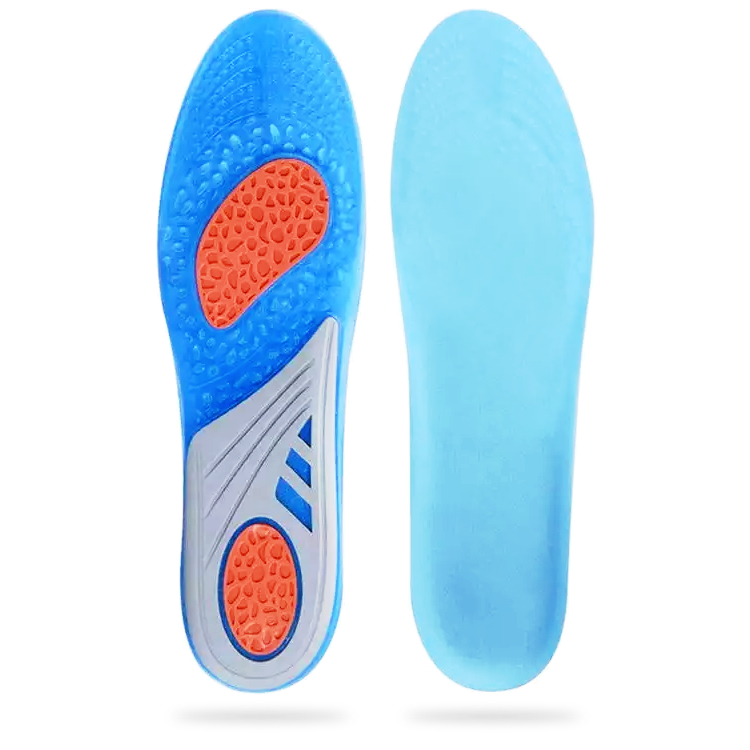
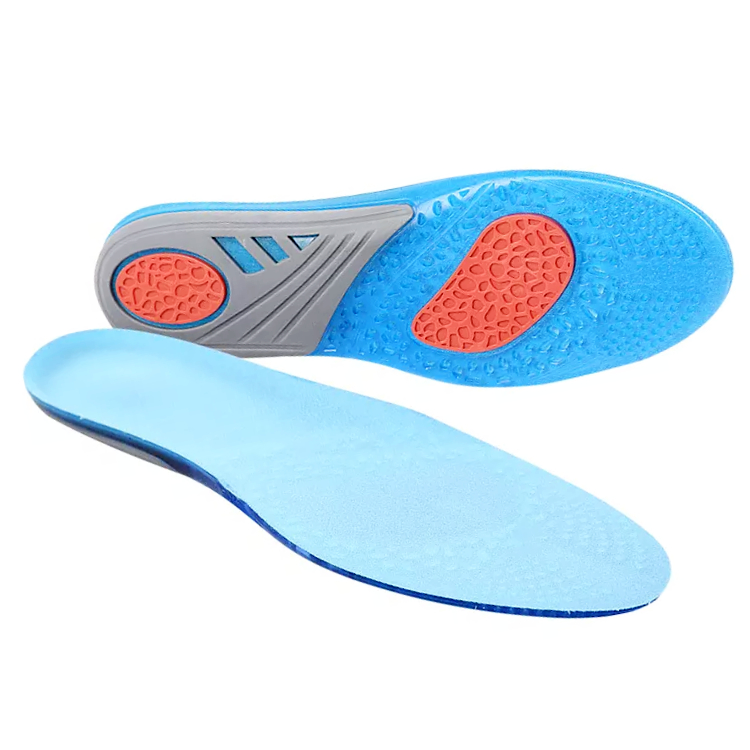

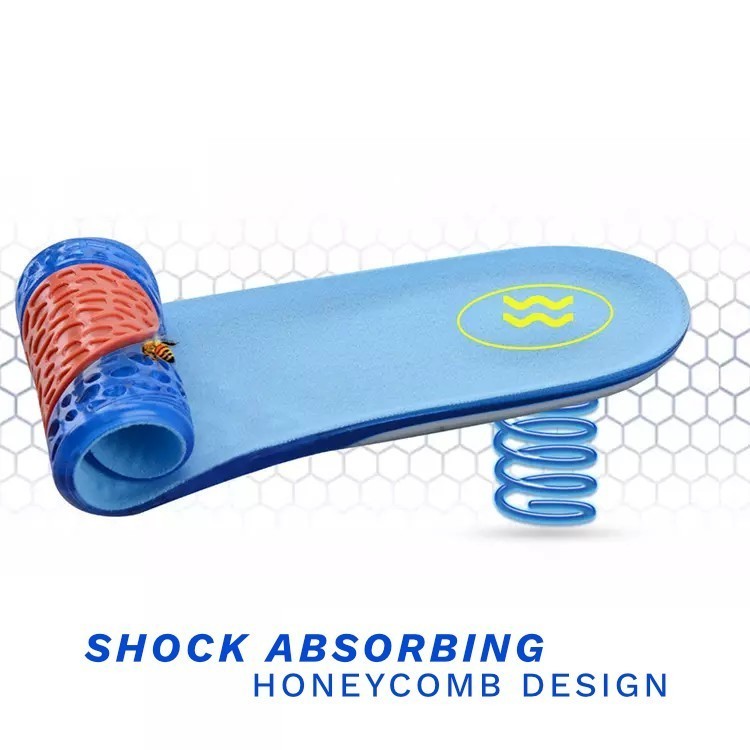
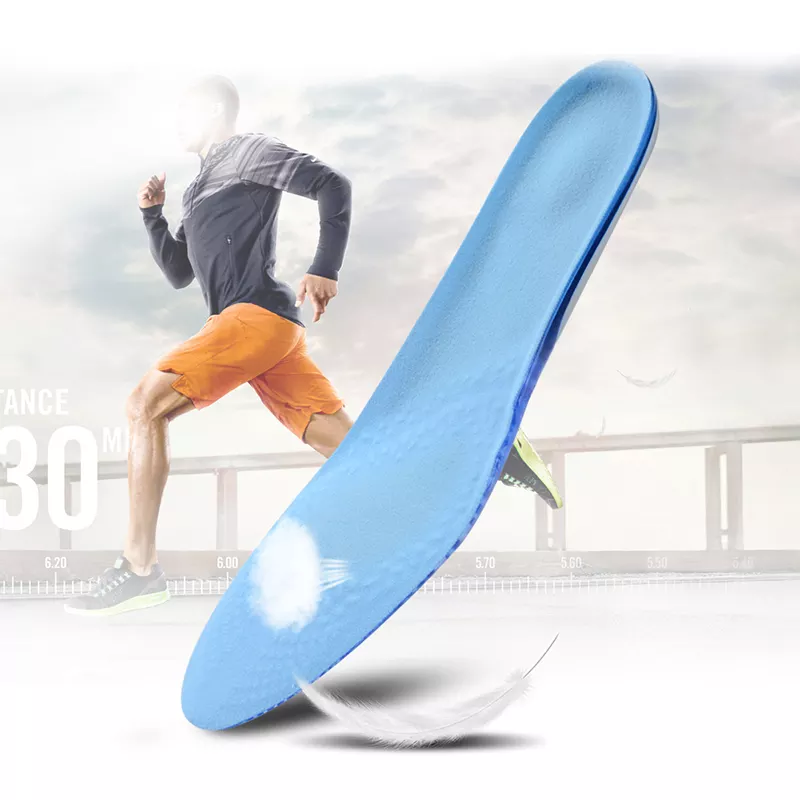
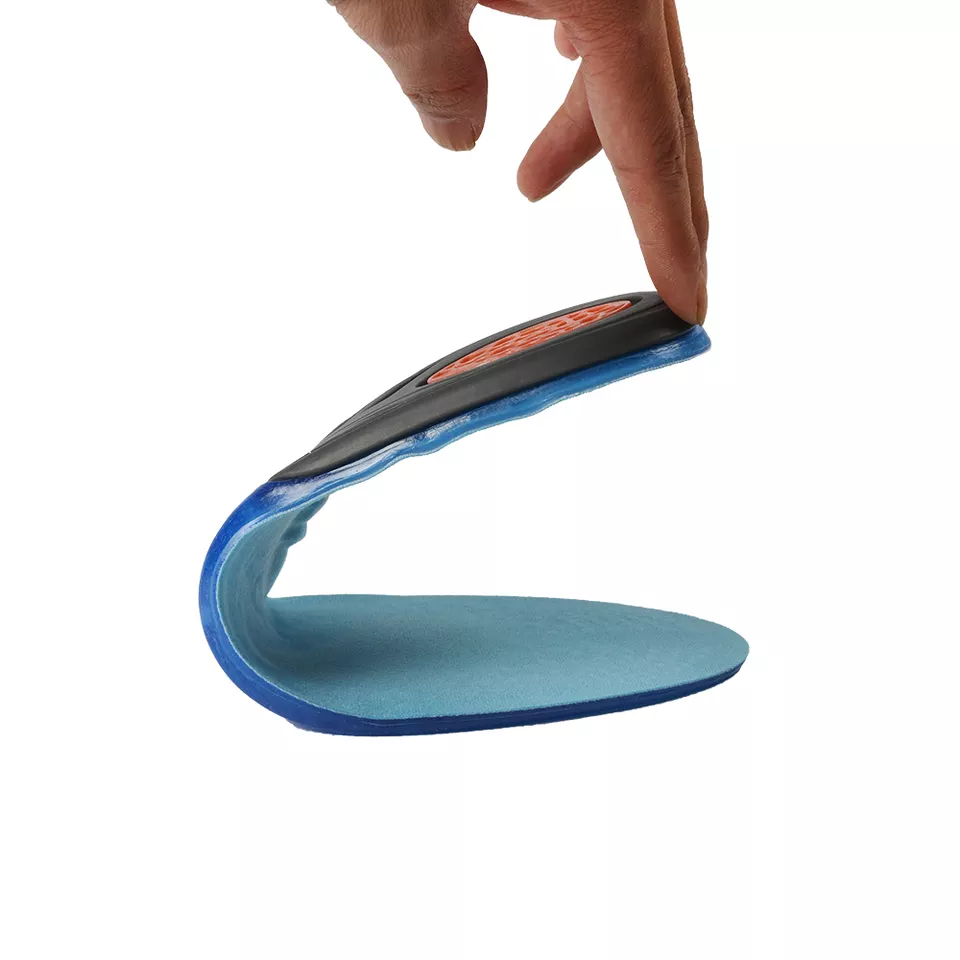
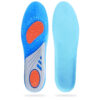
by Carol Parker
I’ve been a long-distance runner for years and have always prided myself on being able to “tough it out”. But after a recent bout of plantar fasciitis, I realised I needed to take better care of my feet. That’s when I stumbled upon these insoles.
The construction of these insoles is sturdy and robust, meaning they’ve held up beautifully even after many uses. They snugly fit into my running shoes, and I must admit, wearing them for extended periods is a breeze. Comfort-wise, it’s like walking on a cushioned path.
The most important part is, of course, the relief. Let me tell you, these insoles have been a game-changer for me. The sharp foot pain that used to shadow my every step has now significantly reduced. I would say the insoles are worth every penny, considering the comfort and support they provide.
The design is sleek and unassuming, and they’re super easy to slip in and out of my shoes. NuovaHealth’s customer service was also a pleasant surprise – responsive and helpful. All in all, I wholeheartedly recommend these Orthotic Insoles. They’ve breathed new life into my runs!
by Layla Qasim
My dad recently had ankle surgery, and finding the right support for his recovery was crucial. I bought these insoles for him, and he couldn’t be happier. He mentioned how they’ve provided excellent arch support and made his recovery process smoother. Now he’s able to walk around the house with much less discomfort. The quality is top-notch, and they seem durable enough to last for a long time. It’s fantastic to see him more active and less in pain. These insoles are definitely worth trying out.